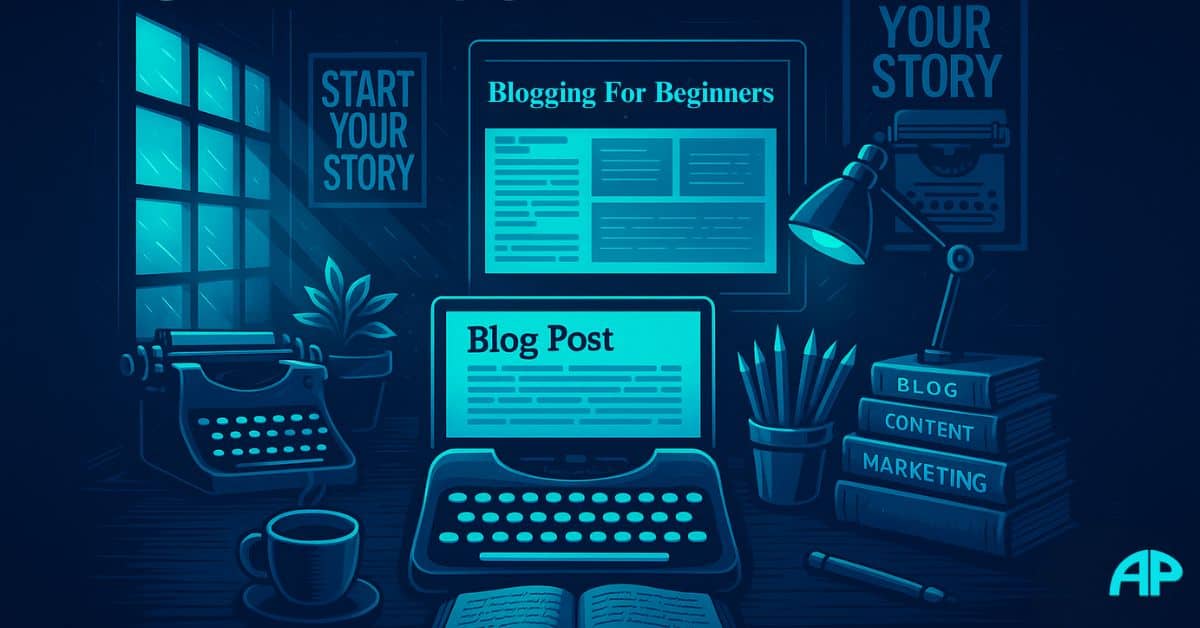
Discover how to start a blog and turn your passion into profit with this easy-to-follow guide for beginners.
Blogging for beginners is your first step toward freedom, where your ideas fuel your income, and your life is yours again.
Table of Contents
- First Step on Your Blogging Journey
- What Is Blogging? More Than You Think
- Find Your Perfect Blog Niche
- Get Your Blog Up and Running
- Content That Connects & Converts
- Get More Eyes on Your Blog
- Make Your Blog Work for You
- Final Thoughts & Next Steps
- Avoid These Blogging Mistakes
- Your Blogging Journey Ahead
The First Step on Your Blogging Journey
Have you ever dreamed of turning your passion into a source of income? Well, blogging is one of the easiest and most rewarding ways to do just that. But, if you’re a blogging for beginners kind of person, you might be feeling a little overwhelmed by the idea of starting your blog and actually making money from it. Don’t worry – this guide is here to walk you through it!
In this post, I’m going to break down everything you need to know to set up your blog, create content, attract readers, and turn your blog into a money-making machine. Whether you’re looking to make a little extra cash on the side or build a full-time business, you’re in the right place.
For more tips on how to start your blog with confidence, check out my post: Build your voice, brand, and freedom. 6 reasons to start your blog today
What Is Blogging? More Than You Think
What is blogging?
It’s more than just writing online. Blogging is the act of sharing your ideas, knowledge, and experiences through regularly updated content, usually on a website you control. It’s your personal platform to educate, entertain, inspire, or even challenge the norm.
But here’s the truth:
Blogging isn’t just about hitting “publish.”
It’s about connection, building trust, creating conversations, and attracting people who care about what you have to say.
Why Blogging Still Matters
Even in a world full of social media noise, blogging stands strong. Unlike short-form posts that vAn Instagram Story might vanish in 24 hours. Blog content, especially for those blogging for beginners, can work for you long term. It drives traffic, builds your brand, and grows your income over time.
Here’s what blogging can be:
- A digital journal to share your personal story
- A teaching tool to help others solve real problems
- A freedom business that generates passive income
- A movement that brings like-minded people together
The best part?
You’re in control. This is your blog, guided by your rules and powered by your voice.
In Short: What Is Blogging?
It’s one of the most powerful tools for self-expression and online business and it’s still one of the smartest ways to build a brand, grow an audience, and create real impact.
Pick a Niche That Pays (and Feels Right)
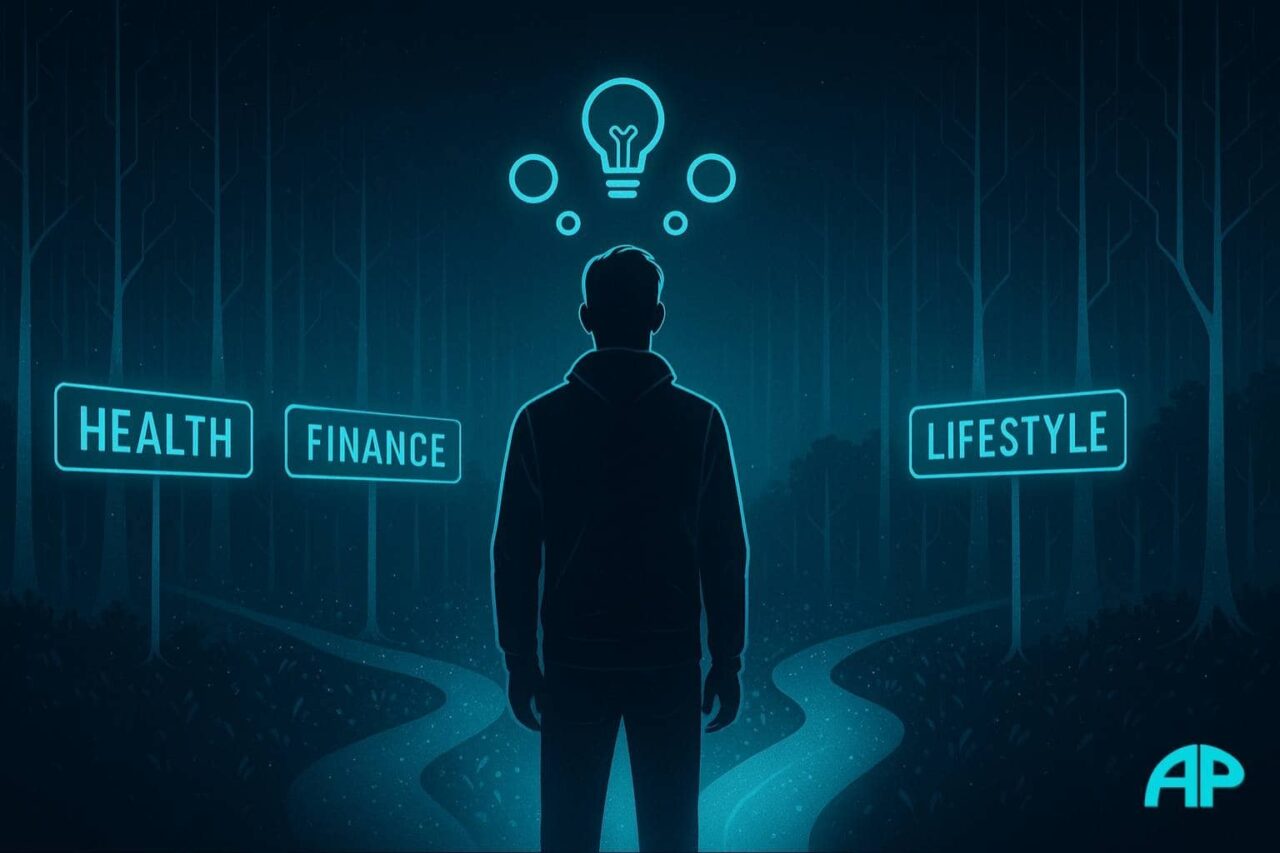
Choosing a niche is the first step in your blogging for beginners journey. But what exactly is a niche, and why does it matter? A niche is the specific topic or category your blog will focus on.
Why Choosing the Right Niche Matters for Blogging
Your niche defines your blog’s direction, the type of audience you’ll attract, and, most importantly, the type of content you’ll create. Here’s why choosing the right niche is essential for blogging for beginners:
- Focus your content: A clear niche helps you avoid trying to be everything to everyone. It helps you stay focused and create content that resonates with your target audience.
- Attract the right audience: When you target a specific group of people, you attract readers who are more likely to engage with your content and become loyal followers.
- Monetization opportunities: Certain niches, like health, finance, and personal development, tend to have more lucrative monetization options (like affiliate marketing and sponsored posts).
How to Choose Your Niche for Blogging
Start with what lights you up:
The best blogs, especially when blogging for beginners, start with genuine passion. Ask yourself: What could you write about for hours without getting bored? When you care deeply about your topic, that energy shines through. That’s what draws readers in. People can sense when you’re being authentic, and that builds trust and connection from day one.
Validate your idea with real-world demand:
Passion is powerful, but it isn’t everything. As you explore your blogging for beginners journey, make sure others care about your topic too. Use tools like Google Trends, AnswerThePublic, or YouTube’s search bar to find what people are actively looking for. See what’s working in your niche. If others are writing about it and gaining traction, that’s a good sign you’re on the right path.
Think about long-term profit potential:
You don’t need to chase money, but it’s wise to understand how your niche can lead to income. Many blogging for beginners success stories come from choosing niches that naturally support monetization, such as personal finance, health, lifestyle, or online business. Look into affiliate programs, digital product ideas, and ad revenue models. A smart niche can turn passion into purpose and purpose into profit.
Launch Strong: Set Your Blog Up Right
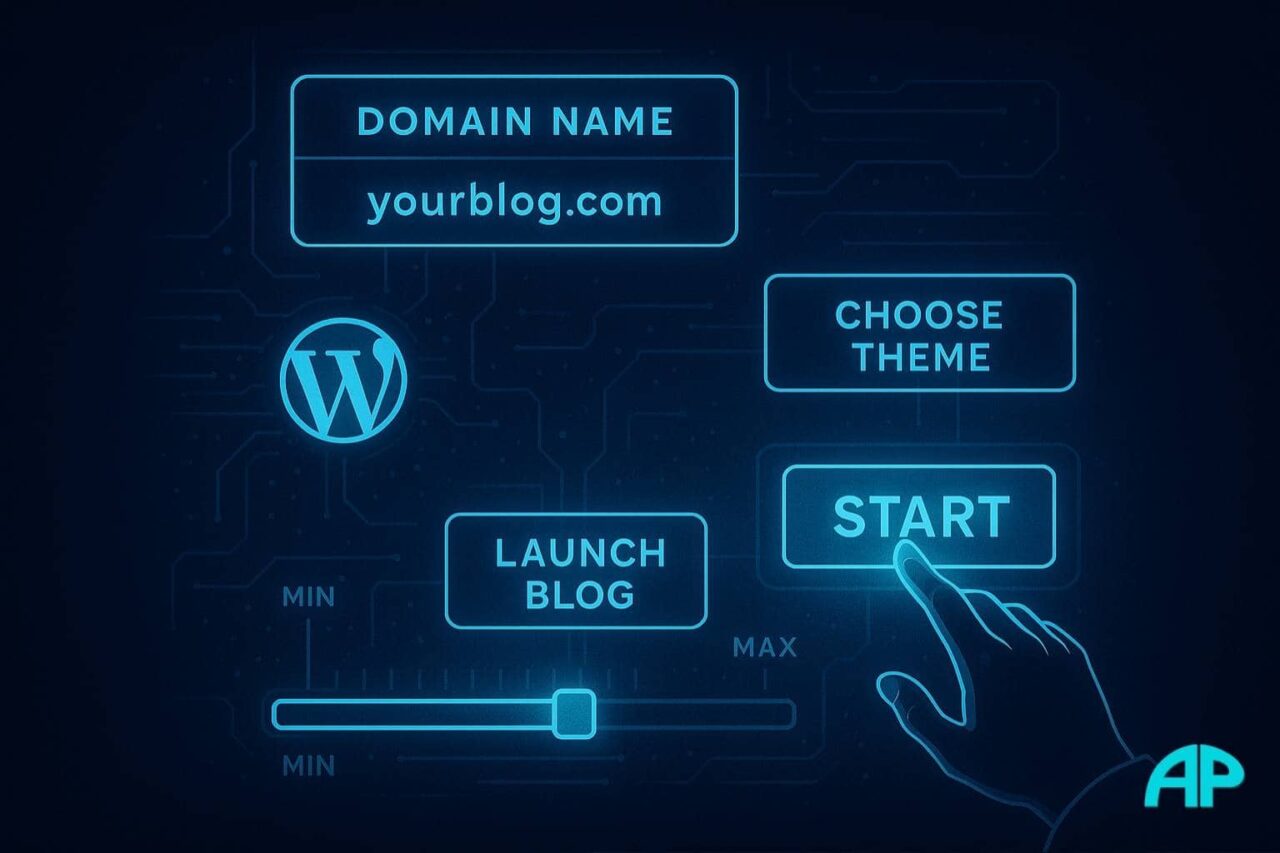
Once you’ve chosen your niche, it’s time to get your blog up and running. Setting up a blog may sound complicated, but it’s actually easier than you might think, especially with platforms like WordPress.
Step 1: Choose Your Blogging Platform
For beginners, WordPress.org is the top choice. It’s free, powerful, and easy to use once you’re set up with your own hosting. It gives you full control over your site and scales with you as you grow.
Step 2: Pick Your Domain Name for Your Blog
Your domain name is your blog’s web address (e.g andrewsblog.com). Keep it short, memorable, and related to your niche. A good domain name should be easy to spell and reflect what your blog is about.
Step 3: Get Hosting for Your Blog
You need a hosting provider to store your blog’s files. Reliable options like VPS Blocks or SiteGround are perfect for beginners. They are affordable, easy to set up, and offer great customer support.
Step 4: Install WordPress on Your Blog
Most hosting providers offer a one-click WordPress installation. Once you’ve set up hosting, simply follow the instructions to install WordPress, and you’re ready to start customizing your blog!
Step 5: Choose a Theme for Your Blog
Pick a WordPress theme that matches your blog’s aesthetic. You can choose from free or paid themes, but make sure it’s responsive (mobile-friendly) and easy to navigate. Your readers should have no trouble browsing your site on any device.
Want more help getting started?
Read my full guide: How to Start an Online Business: A Step-by-Step Guide. It walks you through everything you need to know and helps you overcome any doubts holding you back.
Write Content That Connects and Converts
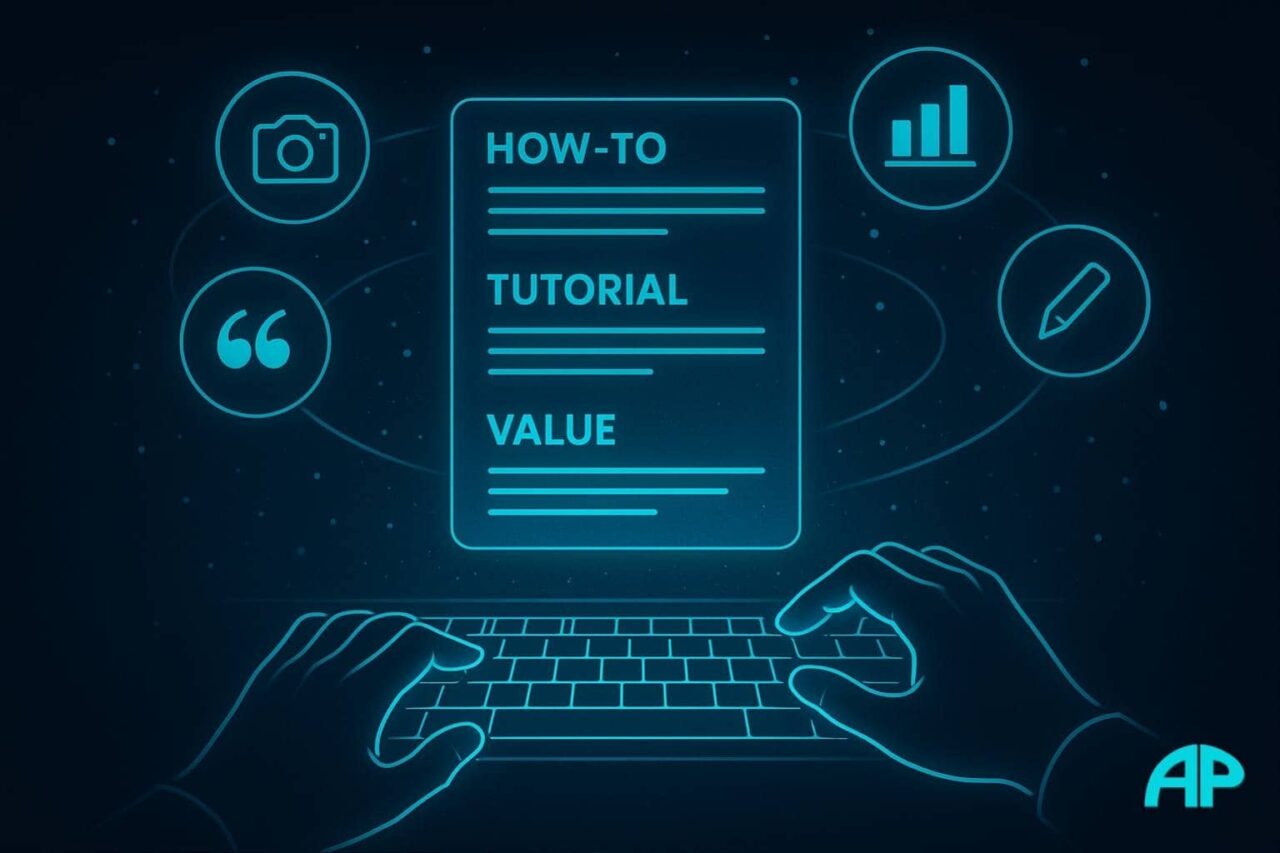
Your content is the reason people show up — and the reason they’ll keep coming back. Great blogs aren’t built on fluff. They’re built on posts that are useful, engaging, and real.
Here’s how to make your blog content stand out:
Focus on Solving Problems
Ask yourself: What does my reader need help with?
Whether it’s step-by-step tutorials, helpful lists, or personal insights, your blog should always aim to serve your audience. The more value you give, the more trust you build.
Keep It Clear and Easy to Read
Use short sentences. Break up paragraphs. Add subheadings.
Nobody likes a wall of text — especially online. Make your posts skimmable and friendly on the eyes. Tools like Hemingway or Grammarly can help tighten things up.
Use Your Voice
Don’t try to sound like someone else. The best blogs feel like a real conversation. Let your personality come through. People follow blogs because they connect with the person behind the posts.
Be Consistent
Consistency builds momentum. Whether you post once a week or twice a month, create a rhythm and stick to it. Quality always beats quantity, but showing up regularly matters.
Add Visuals When It Helps
Images, screenshots, infographics, and even short videos can break up your content and add clarity. Visuals also help keep readers on the page longer — which boosts SEO.
Bottom line:
Great content is the foundation of a successful blog. It builds trust, drives traffic, and creates opportunities to monetize later. Make every post count.
Drive Traffic to Your Blog and Increase Visitors
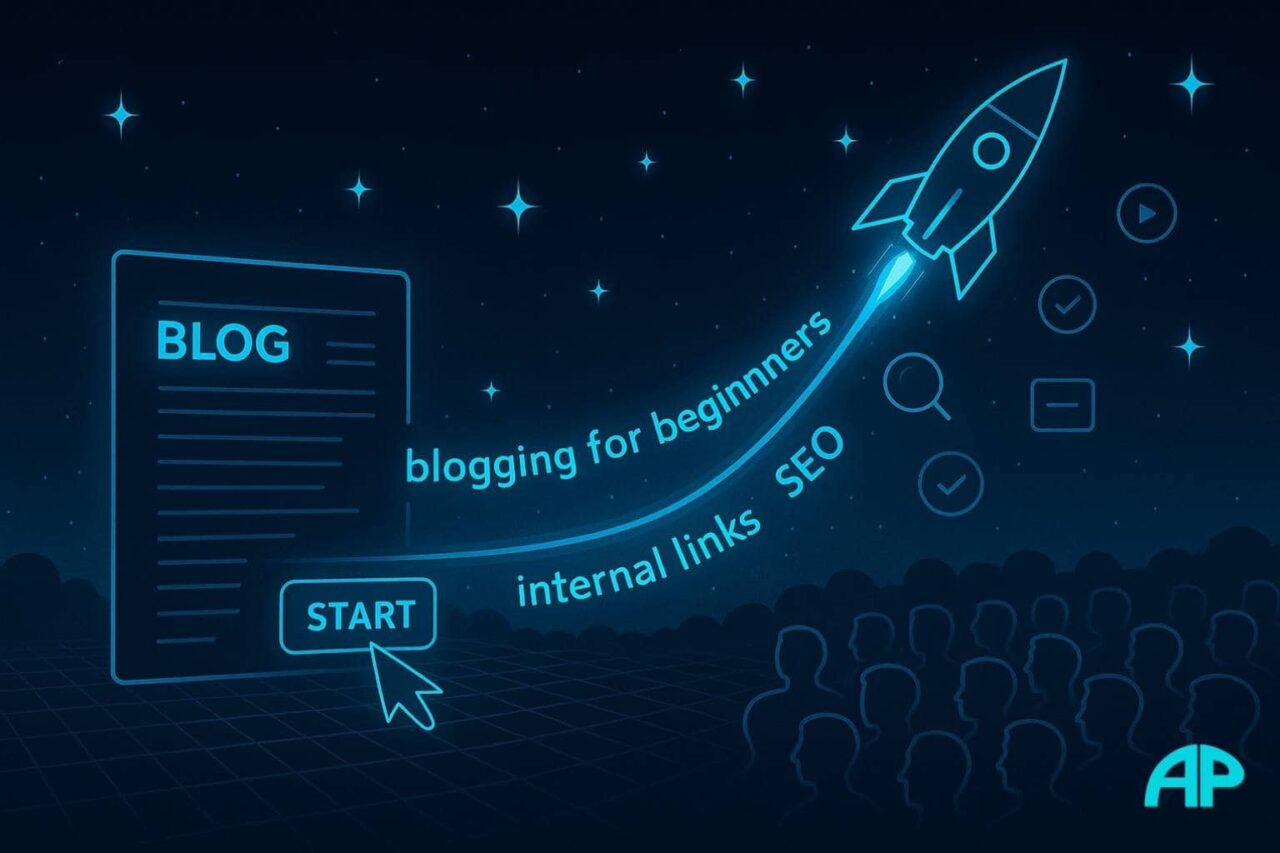
Creating amazing content is important, but getting people to read it is just as crucial. Let’s look at how you can start driving traffic to your blog.
Step 1: Optimize Your Blog for SEO
SEO (Search Engine Optimization) is the practice of optimizing your content to appear in search engines. Here’s how to make your blog more SEO-friendly:
- Use your focus keyphrase “blogging for beginners” in the title, headings, and throughout your post.
- Add relevant internal and external links. For example, Ghost Commerce for Beginners explains how you can build wealth online using blogging.
- Include alt text for your images.
Step 2: Promote Your Blog on Social Media

Share your blog posts across your social media platforms like Instagram, Twitter, Pinterest, and Facebook. These platforms are powerful tools not just for driving traffic, but also for building real relationships with your audience.
Create eye-catching visuals or short video clips to tease your blog content and grab attention in fast-scrolling feeds. Use relevant hashtags, tag people or pages when appropriate, and write engaging captions that encourage clicks.
Don’t just post once, re-share your content regularly with different angles or headlines. Join groups or communities related to your niche and share your content where it adds value. The more consistently you show up, the more visibility and trust you’ll earn.
Step 3: Engage with Your Blog’s Audience
Don’t just post. Interact. Respond to comments on your blog and social media platforms. Whether it’s a simple thank you or a thoughtful reply, engaging with your readers shows that you care and are paying attention.
Ask questions at the end of your blog posts to invite discussion. Like and reply to comments on Instagram or Facebook, and jump into conversations where your blog is shared. If someone shares your post or tags you, acknowledge it. Those small gestures go a long way.
When readers feel heard and valued, they are far more likely to return, recommend your blog to others, and become loyal followers. Building a blog isn’t just about publishing. It’s about connection.
Monetize Your Blog for Passive Income
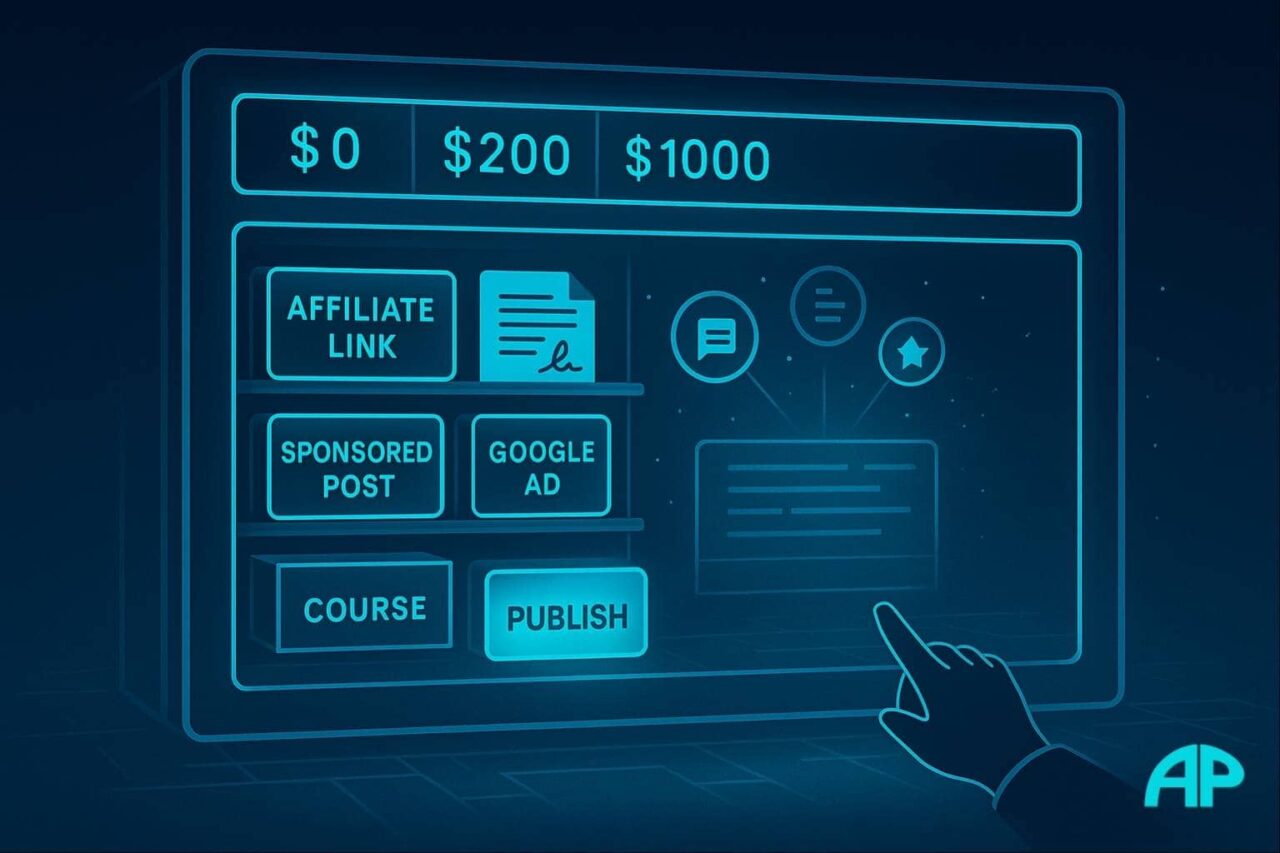
Now comes the exciting part: making money. Once your blog starts attracting consistent traffic, you can begin turning those visitors into income.
There are several ways to monetize your blog. You can earn through affiliate marketing by recommending products and earning a commission on sales. You can also offer sponsored posts, place display ads, or sell your own digital products like ebooks, courses, or templates.
The key is to match your monetization strategy with your audience’s needs. If your readers trust your content, they’re more likely to support your recommendations. Done right, monetizing your blog creates a stream of passive income that continues growing over time, even while you sleep.
Affiliate Marketing for Bloggers

Affiliate marketing is one of the most popular and beginner-friendly ways to make money from blogging. It allows you to earn income by promoting other people’s products or services—without having to create your own.
Here’s how it works.
First, sign up for affiliate programs that match your blog’s niche and audience. This could include networks like Amazon Associates, ShareASale, CJ Affiliate, or niche-specific platforms. Once approved, you’ll get unique tracking links for the products or services you choose to promote.
Next, weave those affiliate links naturally into your blog content. This could be in the form of product reviews, tutorials, listicles, or even personal stories. When a reader clicks your affiliate link and makes a purchase, you earn a commission. Some programs offer a flat fee, while others pay a percentage of the sale.
Affiliate marketing works best when your recommendations are genuine and relevant. The more your audience trusts you, the more likely they are to take action on your suggestions—and that’s when the income starts to grow.
To get started with affiliate marketing, be sure to check out A Beginner’s Guide to Affiliate Marketing.
Sponsored Posts on Your Blog
As your blog grows and starts attracting a loyal audience, brands may reach out to collaborate through sponsored posts. These are paid articles where you feature or review a product, service, or brand in exchange for compensation.
Sponsored posts can be a great way to earn money while still providing valuable content, especially when the product or service genuinely aligns with your niche and audience. It’s important to choose partnerships that feel authentic. Promoting something that doesn’t fit your blog’s message can damage the trust you’ve worked hard to build.
You don’t have to wait for brands to contact you. Once your traffic and engagement are solid, you can take the lead and pitch to companies you believe in. Share your blog stats, audience demographics, and explain why the partnership would make sense.
Always disclose sponsored content clearly. Transparency builds credibility, and in most countries, it’s a legal requirement. When done well, sponsored posts create a win for everyone: helpful content for your readers and consistent revenue for your blog.
Google AdSense for Bloggers
Once your blog starts generating steady traffic, you can apply for Google AdSense to begin earning passive income through display ads. AdSense automatically places relevant ads on your site based on your content and audience behavior.
You get paid whenever someone clicks on one of those ads. It may not seem like much at first, but over time, those clicks can add up as your traffic grows.
Getting started is simple. Apply for a free AdSense account and connect it to your blog. Once approved, you can choose where ads appear, such as in your sidebar, header, or within your blog posts.
While AdSense isn’t the highest-paying option, it’s easy to set up and completely hands-off. It works well for blogs with general audiences and consistent page views. Just make sure your ad placement doesn’t interfere with user experience so your site remains clean and easy to navigate.
Takeaways to Blog Like a Pro
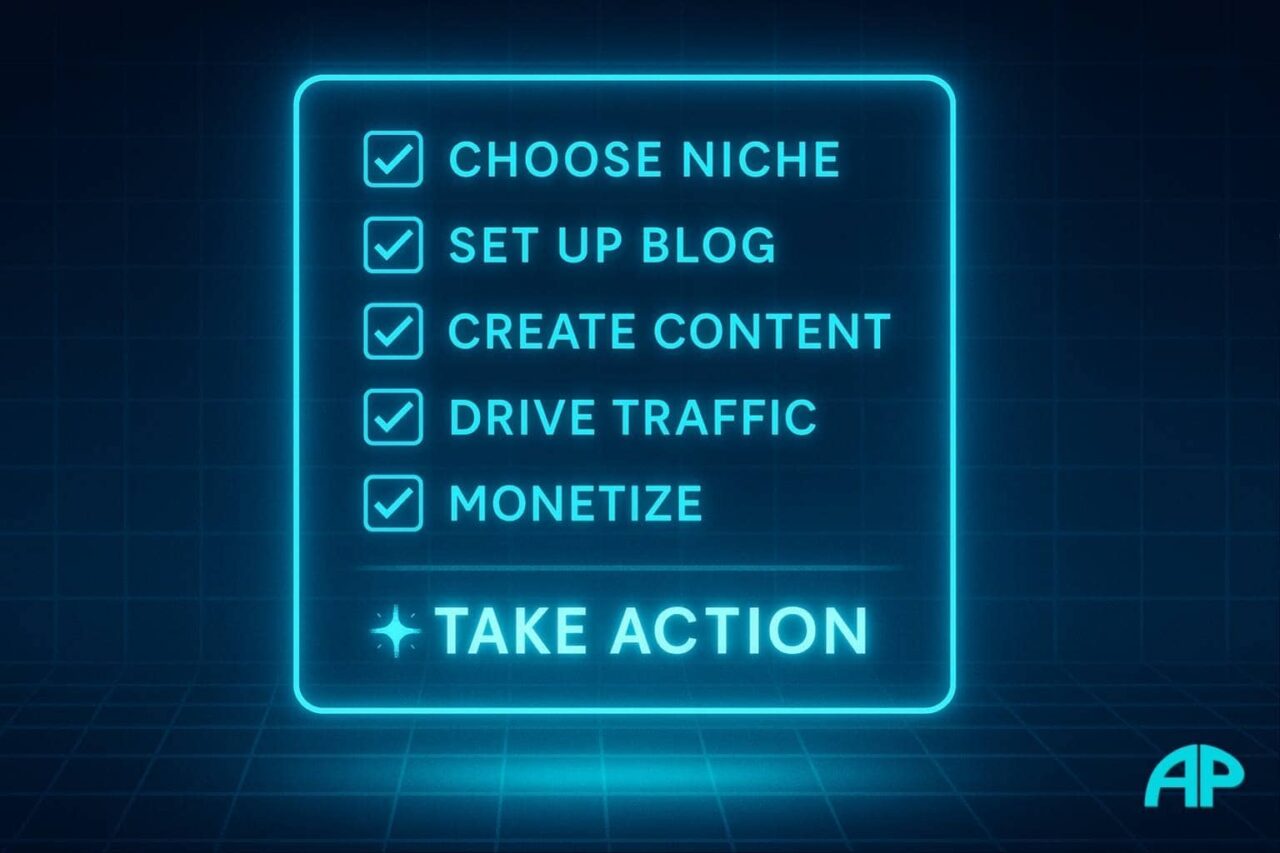
Let’s wrap it up with the essential steps to help you launch your blog, attract readers, and start earning income, even if you’re just starting out.
Choose your niche
Pick a topic you genuinely care about. It should be something you enjoy writing about and that also offers opportunities to make money. The sweet spot is where passion meets profit.
Set up your blog
Secure reliable hosting, choose a domain name that’s memorable and relevant, and install WordPress to bring your blog to life. A strong foundation sets you up for long-term growth.
Create high-quality content
Focus on delivering value. Write helpful, entertaining, or informative posts that solve problems or spark curiosity. The better your content, the more likely readers will come back and share it.
Drive traffic to your blog
Use SEO to get found on Google. Share your posts on social media. Connect with other bloggers or join niche communities. The goal is to get eyes on your work consistently.
Monetize your blog
Turn your traffic into income through affiliate links, sponsored content, display ads, or digital products. Choose the methods that align best with your niche and audience.
Starting a blog takes effort, but with the right strategy, it can grow into something powerful and profitable.
Common Blogging Mistakes to Avoid
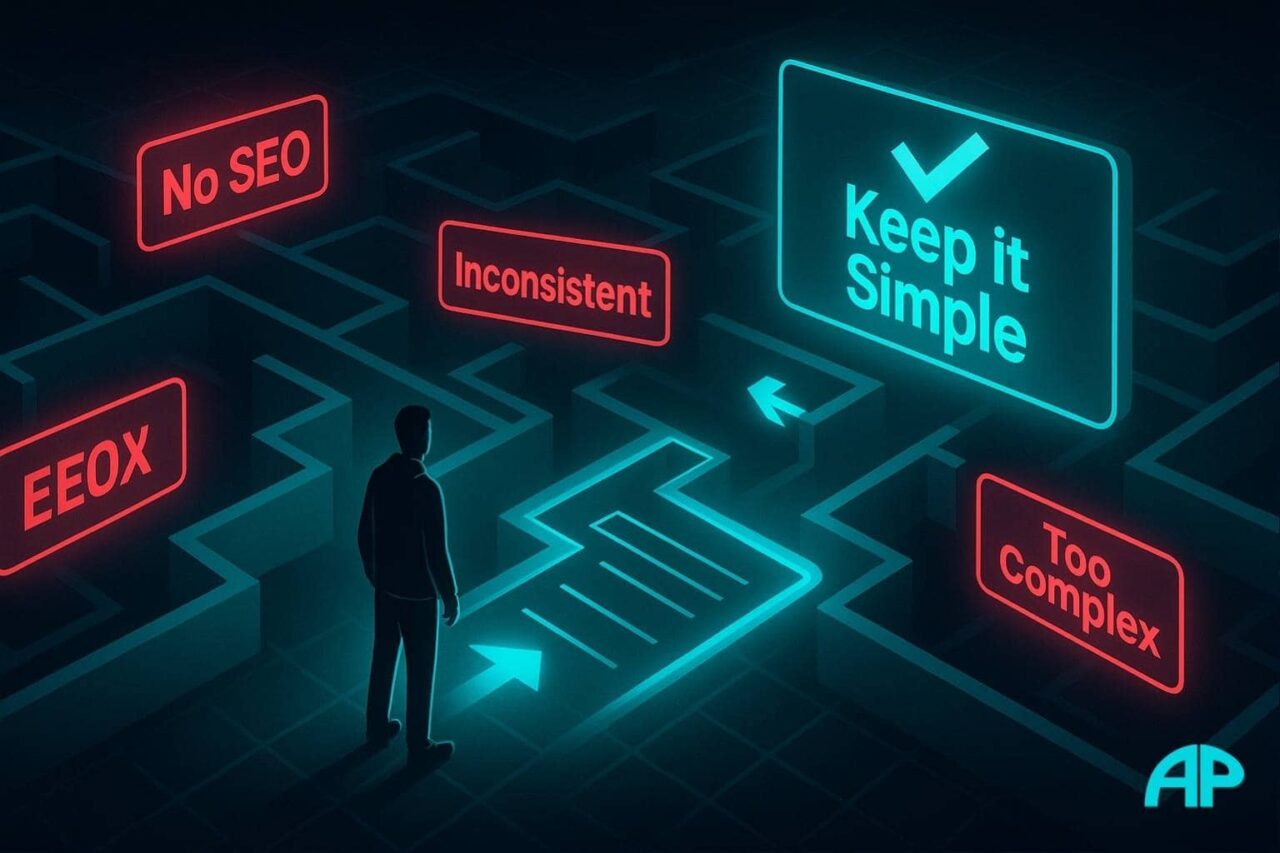
Blogging for beginners can feel overwhelming at times, and it’s totally normal to make a few missteps along the way. Being aware of the common pitfalls can help you stay on track and grow faster.
Neglecting SEO
Search engine optimization is one of the most important tools in your blogging toolkit. If you skip basic SEO practices like using the right keywords, writing strong meta descriptions, or optimizing your images, you’re missing out on free, long-term traffic from search engines.
Inconsistent posting
A blog without regular content can quickly lose traction. If you’re not showing up, neither will your audience. Set a realistic schedule and stick to it. A simple content calendar can help you stay organized and publish consistently.
Overcomplicating things
It’s easy to fall into the trap of obsessing over fonts, colors, and plugins. Don’t let design distract you from your main goal. Keep your layout clean and your site easy to navigate. Focus on writing first, then polish the look over time.
Ignoring your audience
If you’re writing just for yourself, your blog might struggle to grow. Pay attention to what your readers respond to. Ask for feedback, check your analytics, and create content that solves real problems for your audience.
Avoiding these common mistakes can save you time, reduce frustration, and help you build a blog that grows steadily and sustainably.
Conclusion: Your Blogging Journey Ahead
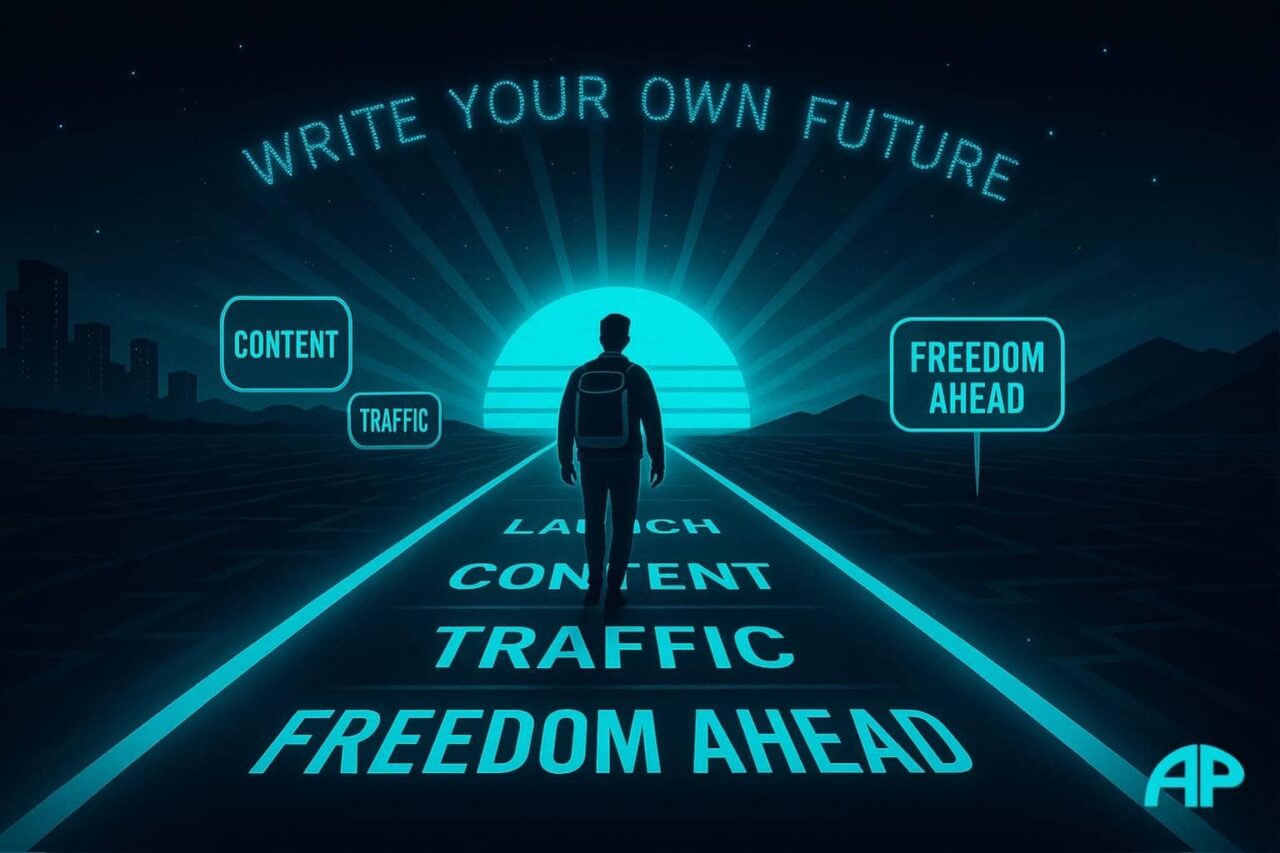
Starting a blog and making money from it is absolutely possible, even if you’re just starting out. With the right steps, blogging for beginners can turn into a profitable and rewarding journey. Focus on staying consistent, creating real value for your readers, and giving it the time it deserves. Success comes with patience and persistence.
Ready to start your journey? Check out my Ghost Commerce Free Training to learn how to build a profitable online business through affiliate marketing and more!
If you’re serious about turning your blog into something real, I’d love to help.
Book a free strategy call and let’s talk about where you’re at and where you want to go. No fluff—just real support from someone who’s been there.
👉 [Click here to book your call now]


